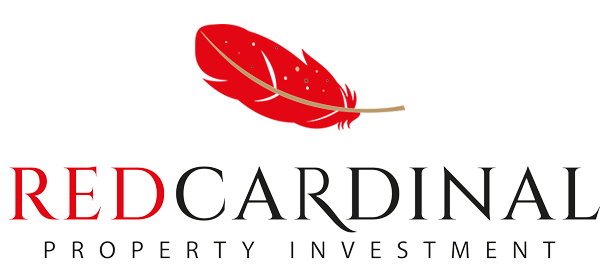Investing in property can be a lucrative venture, but it requires careful planning and consideration. The key to achieving your financial goals lies in selecting the optimal property investment strategy. With options like buy and hold, fix and flip, REITs, and real estate crowdfunding, it is crucial to align your strategy with your specific objectives. This article provides an overview of the factors to consider when choosing the optimal property investment strategy that best suits your goals.
Overview of Factors to Consider for Aligning Strategy with Goals
To ensure your property investment strategy aligns with your goals, several key factors should be taken into account:
Aligning Investment Goals with an Optimal Property Investment Strategy
Clearly defining your investment goals is the first step towards selecting the right strategy. Are you looking for long-term wealth creation or immediate cash flow? Identifying your short-term and long-term objectives will help you narrow down the suitable options.
Risk Tolerance
Assessing your risk tolerance is crucial in determining the level of involvement and potential market fluctuations you are comfortable with. Different strategies carry varying degrees of risk, and understanding your risk appetite will help you choose a strategy that aligns with your comfort level.
Adapting to Evolving Market Conditions in an Optimal Property Investment Strategy
Analysing market conditions is essential to make informed investment decisions. Research local real estate market trends, supply and demand dynamics, and economic indicators. This analysis will enable you to identify opportunities and potential risks associated with different strategies.
Financial Analysis
Conducting a thorough financial analysis is critical in evaluating the viability of a strategy. Calculate the potential return on investment (ROI), cash flow projections, and estimate property appreciation potential. Additionally, consider tax implications and associated costs to make informed financial decisions.
Effective Exit Strategies: Essential Components of an Optimal Property Investment Strategy
Having clear exit strategies is essential for successful property investment. Evaluate the available options for each strategy and consider factors like liquidity and flexibility. Align your exit strategies with your long-term goals to ensure a smooth transition when the time comes.
By carefully considering these factors, you can choose a property investment strategy that aligns with your goals and maximizes your chances of success in the dynamic real estate market.
Define Your Investment Goals
Short-term Goals: Influencing Decisions in an Optimal Property Investment Strategy
When it comes to property investment, setting clear goals is essential to guide your decision-making process. Short-term goals are focused on achieving immediate or near-term results. Some common short-term goals in property investment include generating passive income and aiming for quick profits. Generating passive income involves investing in properties that can generate regular rental income, providing a steady stream of cash flow. On the other hand, aiming for quick profits typically involves strategies like fix and flip, where properties are purchased, renovated, and sold for a profit within a short timeframe. These short-term goals are appealing for investors looking to generate income or capitalize on market opportunities in the shorter term.
Long-term Goals: Driving Factors in an Optimal Property Investment Strategy
While short-term goals can offer immediate returns, it is equally important to consider long-term goals in property investment. Long-term goals are focused on wealth creation and building a sustainable financial future. This can include objectives such as creating long-term wealth through property appreciation, diversifying investment portfolios, and planning for retirement. By investing in properties that have the potential for long-term appreciation, investors can accumulate wealth over time and benefit from the growing value of their assets. Additionally, real estate can serve as a reliable component of retirement planning, providing a stable income source and potential asset growth.
Specific Financial Targets
Setting specific financial targets is crucial for property investors to gauge their progress and measure success. Financial targets can include objectives such as a target return on investment (ROI) or specific cash flow requirements. ROI represents the percentage of profit generated relative to the amount invested and serves as an indicator of the investment’s profitability. Cash flow requirements, on the other hand, refer to the minimum income needed from the investment property to cover expenses and generate positive cash flow. By setting clear financial targets, investors can evaluate the feasibility of potential investments and make informed decisions that align with their desired financial outcomes.
By understanding and aligning your short-term goals, long-term goals, and specific financial targets, you can develop an optimal property investment strategy that aligns with your aspirations and helps you achieve your desired financial outcomes.
Understand Different Property Investment Strategies
Buy and Hold Strategy
The buy and hold strategy is a popular approach in optimal property investment strategy, involving the purchase of properties with the intention of holding them for an extended period. This strategy offers several benefits and considerations for investors.
- Benefits and considerations: One of the key benefits of the buy and hold strategy is its potential for both rental income and long-term appreciation. By renting out the property, investors can generate a steady stream of passive income. Additionally, over time, the property’s value may appreciate, leading to potential capital gains. However, it is essential to consider factors such as property management, ongoing maintenance costs, and potential vacancies when implementing this strategy.
- Rental income potential and long-term appreciation: The buy and hold strategy allows investors to leverage the rental income potential of the property. By securing reliable tenants and setting competitive rental rates, investors can enjoy a regular cash flow, which can contribute to their financial goals. Furthermore, over the long term, properties in desirable locations have the potential to appreciate in value. This appreciation can result from various factors such as economic growth, infrastructure development, and changing market conditions.
The Fix and Flip Strategy: A Viable Option in an Optimal Property Investment Strategy
The fix and flip strategy involves purchasing properties that require renovation or repairs, with the intention of selling them quickly for a profit. This strategy comes with its own set of benefits and considerations.
- Benefits and considerations: One of the primary benefits of the fix and flip strategy is the potential for substantial profits within a short timeframe. By purchasing properties below market value, making cost-effective renovations, and selling at a higher price, investors can capitalize on market opportunities. However, it is crucial to consider factors such as renovation costs, market demand, and potential risks associated with accurately estimating repair expenses and selling the property within the desired timeframe.
- Profit potential and renovation expertise required: The fix and flip strategy can offer significant profit potential for investors. Successful execution relies on the ability to accurately assess the property’s renovation needs, budget effectively, and manage the renovation process efficiently. Renovation expertise and a good understanding of the local market are essential to maximize returns. Additionally, market conditions and buyer preferences play a crucial role in determining the success of the fix and flip strategy.
Real Estate Investment Trusts (REITs)
Real estate investment trusts (REITs) provide investors with the opportunity to invest in a diversified portfolio of properties through publicly traded companies. This strategy offers several benefits and considerations.
- Benefits and considerations: One of the significant benefits of REITs is the potential for diversification. By investing in a REIT, investors can gain exposure to a wide range of properties across different sectors and geographic locations. This diversification can help mitigate risks associated with investing in a single property. However, it is important to consider factors such as management fees, market performance, and the specific assets held within the REIT.
- Diversification and Professional Management: REITs are professionally managed, allowing investors to benefit from the expertise of experienced real estate professionals. These professionals handle property acquisition, management, and leasing, relieving investors of the day-to-day responsibilities. Additionally, REITs provide liquidity as they are traded on stock exchanges, offering investors the ability to buy and sell shares more easily compared to directly owning properties.
Real Estate Crowdfunding: A Potential Approach in an Optimal Property Investment Strategy
Real estate crowdfunding involves pooling funds from multiple investors to invest in a specific property or portfolio of properties. This strategy offers its own set of benefits and considerations.
- Real estate crowdfunding offers investors accessible investment opportunities that were traditionally available only to larger investors. It allows individuals to pool their resources with others and invest in specific properties or portfolios. This strategy provides the potential for diversification by spreading investments across different properties or projects, reducing risk exposure. However, investors should carefully evaluate the credibility and track record of the crowdfunding platform and project sponsors.
- Accessible investment opportunities and potential risks: Real estate crowdfunding platforms provide a user-friendly interface, making it easier for individuals to browse and select investment opportunities. The lower investment thresholds allow more people to participate in real estate investments, providing a chance for portfolio diversification. However, potential risks include the possibility of project delays, property underperformance, or even the failure of the project. Investors should conduct thorough due diligence on the platform, project details, and the reputation of project sponsors before committing funds.
By carefully considering the benefits and considerations of each strategy – buy and hold, fix and flip, real estate investment trusts (REITs), and real estate crowdfunding – investors can make informed decisions that align with their goals and risk tolerance. Each strategy offers unique advantages and considerations, and understanding these factors is crucial to maximizing investment potential and minimizing potential pitfalls.
Assess Your Risk Tolerance
Evaluating Personal Risk Tolerance Level for an Optimal Property Investment Strategy
When it comes to property investment, understanding your personal risk tolerance is crucial. Risk tolerance refers to your ability and willingness to withstand potential losses or fluctuations in investment value. Evaluating your risk tolerance level helps you make informed decisions and select investment strategies that align with your comfort level.
Determining your risk tolerance involves assessing factors such as your financial situation, investment goals, and personal temperament. It’s important to consider how much loss you can afford to bear without significant negative impacts. Additionally, you should assess your emotional response to market volatility and fluctuations. By evaluating your risk tolerance, you can identify the level of risk you are comfortable taking on in your property investment journey.
Consider the Level of Involvement and Effort Required
Another crucial factor to consider when choosing an optimal property investment strategy is the level of involvement and effort it requires. Different strategies demand varying degrees of active participation and time commitment.
Some strategies, like the buy and hold approach, require less day-to-day involvement. Once the property is acquired and rented out, the involvement decreases. On the other hand, strategies like fix and flip involve more hands-on work. This includes property renovations, project management, and overseeing the selling process.
It’s important to assess how much time, effort, and expertise you are willing and able to dedicate to your property investments. Consider your available resources, skills, and willingness to take an active role in property management and decision-making. Aligning the level of involvement with your preferences and capabilities can help ensure a successful and sustainable investment experience.
Assessing Comfort with Market Fluctuations and Uncertainties in an Optimal Property Investment Strategy
The property market is subject to fluctuations and uncertainties, influenced by various factors such as economic conditions, interest rates, and supply and demand dynamics. It’s essential to determine your comfort level with these market uncertainties when selecting a property investment strategy.
Consider how you react to market volatility and potential risks. Are you comfortable with the possibility of property values fluctuating or experiencing short-term declines? Are you prepared to hold onto your investments during market downturns? Understanding your comfort level with market fluctuations can guide your decision-making process and help you choose a strategy that aligns with your risk tolerance.
Additionally, staying informed about market trends and having a long-term perspective can help mitigate concerns about short-term market uncertainties. By determining your comfort level with market fluctuations, you can select a property investment strategy that suits your risk profile and provides a sense of confidence in the face of market dynamics.
By evaluating your risk tolerance level, considering the level of involvement and effort required, and determining your comfort with market fluctuations, you can make informed decisions when choosing an optimal property investment strategy. These considerations are essential for aligning your investments with your personal preferences and financial goals, setting the stage for a successful and satisfying investment journey.
Analyse Market Conditions
Research Local Real Estate Market Trends and Dynamics
Before making any property investment decisions, it is crucial to conduct thorough research on local real estate market trends and dynamics. Understanding the current state of the market provides valuable insights and helps you make informed investment choices.
By researching local real estate market trends, you gain a deeper understanding of factors such as property values, rental rates, and market activity. Analyse historical data, recent sales, and rental trends to identify patterns and fluctuations. This research allows you to assess the overall health and stability of the local market and make predictions about future performance.
Considering Supply and Demand Factors for an Optimal Property Investment Strategy
Supply and demand dynamics play a significant role in the property market. Assessing these factors helps you gauge the level of competition and potential opportunities within a specific area.
Evaluate the current supply of properties for sale or rent in your target market. Are there an abundance of available properties or a scarcity of options? Additionally, analyse the demand for properties in the area by considering factors such as population growth, job market stability, and local amenities. Understanding the balance between supply and demand allows you to identify areas with high growth potential or areas that may be oversaturated.
Evaluating Economic Indicators and Future Prospects in an Optimal Property Investment Strategy
Economic indicators provide valuable insights into the overall economic health of a region and its potential for growth. Consider factors such as GDP growth, employment rates, and industry diversification to assess the economic prospects of your target market.
Evaluate the future prospects of the local economy by analysing ongoing infrastructure projects, government initiatives, and planned developments. These factors can influence property values, rental demand, and overall market stability. By evaluating economic indicators and future prospects, you can make informed decisions about the potential long-term viability of your property investments.
Thorough research into local real estate market trends, supply and demand factors, and economic indicators is essential for successful property investment. By gathering and analysing this information, you can make informed decisions, identify opportunities, and mitigate risks in the dynamic real estate market.
Conduct Financial Analysis
Calculate Potential Return on Investment (ROI) and Cash Flow
Calculating the potential return on investment (ROI) and cash flow is vital when assessing property investment opportunities. These financial metrics provide insights into the profitability and viability of your investment.
To determine ROI, divide the net profit generated from the investment by the initial investment cost and express the result as a percentage. Consider factors such as rental income, operating expenses, financing costs, and potential tax benefits. This calculation allows you to assess the potential return relative to your investment capital.
In addition to ROI, analysing the cash flow is crucial. Calculate the monthly cash flow by subtracting operating expenses, mortgage payments, and taxes from the rental income. Positive cash flow indicates that your rental income exceeds your expenses, providing you with surplus income to reinvest or cover unforeseen costs.
Estimating Property Appreciation Potential: An Integral Part of an Optimal Property Investment Strategy
Estimating property appreciation potential helps you evaluate the long-term value and profitability of your investment. Finally, consider historical market trends, local economic factors, and future development plans.
Review historical data to identify the average annual property appreciation in the target area. Additionally, assess factors such as job growth, infrastructure improvements, and population trends that can positively influence property values. This estimation helps you forecast potential future returns and assess the overall growth prospects of the investment.
Analysing Tax Implications and Associated Costs in an Optimal Property Investment Strategy
Analysing tax implications and associated costs is crucial to understanding the financial impact of property investment. Consider taxes on rental income, capital gains tax upon property sale, and any deductible expenses.
Consult a tax professional to understand the specific tax regulations and benefits applicable to your investment. Identify deductible expenses such as property management fees, maintenance costs, and mortgage interest payments. Analysing tax implications allows you to accurately assess the net profitability of your investment and make informed financial decisions.
By calculating potential ROI and cash flow, estimating property appreciation potential, and analysing tax implications, you can make informed decisions regarding property investment opportunities. These financial assessments provide a comprehensive understanding of the potential returns, risks, and costs associated with your investment, enabling you to make sound investment choices aligned with your financial goals.
Seek Professional Advice
Consulting with Real Estate Agents or Brokers in Crafting an Optimal Property Investment Strategy
When venturing into property investment, seeking guidance from real estate agents or brokers can provide valuable insights and assistance throughout the process. These professionals possess extensive knowledge of the local market and can help you navigate the complexities of property transactions.
Real estate agents or brokers have access to comprehensive property listings, market data, and industry expertise. They can help you identify suitable investment opportunities based on your criteria and budget. Their understanding of market trends and dynamics allows them to provide valuable advice on pricing, negotiations, and potential risks.
Engaging with real estate professionals fosters a collaborative approach, ensuring that you receive personalized guidance tailored to your investment goals. They can assist with property research, provide property valuation insights, and help you understand legal and regulatory requirements. By consulting with real estate agents or brokers, you benefit from their knowledge and experience, increasing your chances of making informed and successful investment decisions.
Engage with Financial Advisors or Investment Professionals
In addition to consulting with real estate professionals, engaging with financial advisors or investment professionals is crucial to developing a comprehensive investment strategy and managing your financial resources effectively.
Financial advisors possess expertise in optimal property investment strategy, risk management, and portfolio diversification. They can assess your overall financial situation, goals, and risk tolerance to provide tailored advice on property investment as part of your broader investment portfolio. Their guidance can help you align your property investments with your financial objectives and ensure a well-balanced and diversified approach.
Investment professionals, like wealth managers or investment consultants, offer a broader perspective on market trends, economic indicators, and investment opportunities. They provide insights into alternative investment vehicles. They can also evaluate risk-adjusted returns and help you navigate the complexities of the investment landscape.
Engaging with financial advisors or investment professionals lets you leverage their expertise. It helps you gain a holistic view of your investment strategy. In summary, it enables you to make informed decisions based on comprehensive financial analysis.
Networking with Experienced Investors for an Optimal Property Investment Strategy
Networking with experienced investors can provide valuable insights, mentorship, and access to a wealth of knowledge within the property investment community. Engaging with seasoned investors allows you to tap into their expertise, learn from their experiences, and expand your network.
Attend real estate investment conferences, seminars, or local property investment groups to connect with like-minded individuals. Engaging in discussions, sharing ideas, and seeking advice from experienced investors can broaden your understanding of the market, help you identify new opportunities, and gain valuable insights into successful investment strategies.
Experienced investors can provide practical tips, share lessons learned, and offer guidance on navigating challenges in property investment. By building relationships with seasoned investors, you gain access to a support system that can enhance your investment journey and contribute to your long-term success.
By consulting with real estate agents or brokers, engaging with financial advisors or investment professionals, and networking with experienced investors, you can leverage the knowledge and expertise of industry professionals and peers. This collaborative approach enhances your decision-making process, reduces risks, and maximizes your potential for successful property investments.
Evaluate Exit Strategies
Determine Exit Options for Each Investment Strategy
When considering property investment strategies, it is essential to determine the potential exit options available for each strategy. Understanding how you can exit your investments enables you to plan for the future and make informed decisions.
Different investment strategies have varying exit options. For example, with a buy and hold strategy, you may choose to sell the property at a later stage to realize capital gains. Alternatively, you can continue generating rental income and potentially pass the property down to future generations. On the other hand, with a fix and flip strategy, the goal is to sell the property quickly for a profit.
By considering the potential exit options for each investment strategy, you can assess the feasibility and suitability of your chosen approach in relation to your long-term goals.
Assess Liquidity and Flexibility of Different Approaches
Assessing the liquidity and flexibility of different property investment approaches is crucial when considering exit strategies. Liquidity refers to how quickly and easily an investment can be converted into cash without significant loss in value.
Some investment strategies may offer higher liquidity than others. For example, real estate investment trusts (REITs) allow investors to buy and sell shares on the stock market, providing greater liquidity. On the other hand, a direct investment in a physical property may have lower liquidity due to the time and effort involved in selling.
Flexibility is another important consideration. Some strategies, such as fix and flip or real estate crowdfunding, may provide more flexibility as they involve shorter-term investments. Buy and hold strategies, on the other hand, require a longer-term commitment.
By assessing the liquidity and flexibility of different investment approaches, you can align your exit strategies with your financial needs, risk tolerance, and investment preferences.
Align Exit Strategies with Long-Term Goals
Aligning your exit strategies with your long-term goals is vital for a successful property investment journey. Your long-term goals may include factors such as wealth accumulation, retirement planning, or leaving a legacy for future generations.
Consider how each investment strategy aligns with your long-term goals. For example, if your goal is to generate consistent rental income for retirement, a buy and hold strategy may be more suitable. If you aim to build capital quickly, a fix and flip approach might align better.
By aligning your exit strategies with your long-term goals, you ensure that your investment decisions align with desired outcomes. This alignment enables you to make informed choices. It helps you determine when and how to exit investments to achieve financial objectives.
Additionally, by determining exit options for each investment strategy, assessing liquidity and flexibility, and aligning exit strategies with long-term goals, you can navigate the property investment landscape with clarity and purpose. These considerations help you plan for the future, maximize returns, and make strategic decisions regarding your investment portfolio.
Create a Realistic and Optimal Property Investment Strategy
Determining Exit Options for Each Optimal Property Investment Strategy
When engaging in property investment, it is essential to determine the available exit options for each investment strategy. Understanding how you can exit your investments allows you to plan effectively and make informed decisions.
Different investment strategies offer varying exit options. For instance, with a buy and hold strategy, you may choose to sell the property in the future to realize capital gains. Alternatively, you can continue generating rental income and potentially pass the property down to future generations. Conversely, a fix and flip strategy focuses on selling the property quickly for a profit.
By considering the potential exit options for each investment strategy, you can assess their feasibility and suitability in relation to your long-term goals.
Assessing Liquidity and Flexibility in Different Approaches to an Optimal Property Investment Strategy
Assessing the liquidity and flexibility of different property investment approaches is crucial when considering exit strategies. Liquidity refers to how easily and quickly an investment can be converted into cash without significant loss in value.
Certain investment strategies offer higher liquidity than others. For example, real estate investment trusts (REITs) allow investors to buy and sell shares on the stock market, providing greater liquidity. Conversely, a direct investment in a physical property may have lower liquidity due to the time and effort involved in selling.
Flexibility is another important consideration. Some strategies, like fix and flip or real estate crowdfunding, offer more flexibility as they involve shorter-term investments. On the other hand, buy and hold strategies require a longer-term commitment.
By assessing the liquidity and flexibility of different investment approaches, you can align your exit strategies with your financial needs, risk tolerance, and investment preferences.
Aligning Exit Strategies with Long-Term Goals in an Optimal Property Investment Strategy
Aligning your exit strategies with your long-term goals is vital for a successful property investment journey. Your long-term goals may include factors such as wealth accumulation, retirement planning, or leaving a legacy for future generations.
Consider how each investment strategy aligns with your long-term goals. For example, if your goal is to generate consistent rental income for retirement, a buy and hold strategy may be more suitable. If you aim to build capital quickly, a fix and flip approach might align better.
By aligning your exit strategies with your long-term goals, you ensure that your investment decisions are in line with your desired outcomes. This alignment allows you to make informed choices regarding when and how to exit your investments to achieve your financial objectives.
Furthermore, by determining exit options for each investment strategy, assessing liquidity and flexibility, and aligning exit strategies with long-term goals, you can navigate the property investment landscape with clarity and purpose. These considerations help you plan for the future, maximize returns, and make strategic decisions regarding your investment portfolio.
Create a Realistic Investment Plan
Developing a Step-by-Step Roadmap for an Optimal Property Investment Strategy
When embarking on a property investment journey, it is crucial to develop a step-by-step roadmap to guide your actions and ensure a systematic approach. This roadmap serves as a blueprint for your investment process, enabling you to make well-informed decisions and stay organized.
Begin by conducting thorough research on the local real estate market, investment strategies, and financing options. Furthermore, this research will provide a foundation of knowledge to inform your roadmap. Next, outline the specific steps involved in acquiring, managing, and exiting properties, tailored to your chosen investment strategy.
Set Clear Objectives and Timeline
Setting clear objectives and establishing a timeline is essential for optimal property investment strategy. Clearly define your investment goals, whether they are focused on generating passive income, building long-term wealth, or achieving specific financial targets.
Once your objectives are defined, establish a realistic timeline that outlines the key milestones and deadlines for each stage of your investment journey. This timeline will help you stay on track and measure your progress against set targets.
Contingency Plans: A Vital Aspect of an Optimal Property Investment Strategy
While it is important to plan meticulously, it is equally crucial to consider contingency plans for unexpected situations that may arise during your property investment journey. Contingency planning involves identifying potential risks and developing strategies to mitigate them.
Consider factors such as changes in market conditions, unexpected expenses, or delays in property transactions. By anticipating these potential challenges, you can be better prepared to handle them and minimize their impact on your investment goals.
Include flexibility in your roadmap by allocating resources for unforeseen circumstances and having backup plans in place. This may involve maintaining a financial buffer, diversifying your investment portfolio, or having alternative financing options available.
Develop a step-by-step roadmap. Set clear objectives and timelines. Consider contingency plans. By doing so, you can approach your property investment journey with clarity and confidence. This structured approach helps you stay focused. It also enables you to adapt to changing circumstances. Ultimately, it increases your chances of achieving your investment goals.
Monitor and Adjust Your Strategy
Regularly Reviewing and Tracking Investment Performance in Pursuit of an Optimal Property Investment Strategy
Regularly reviewing and tracking the performance of your property investments is vital to ensure they align with your goals and yield the desired outcomes. By monitoring the performance, you can make informed decisions and take corrective actions when necessary.
Set up a system to regularly assess key performance indicators such as return on investment, cash flow, occupancy rates, and property appreciation. Finally, this allows you to gauge the effectiveness of your investment strategy and identify areas for improvement.
Staying Informed about Market Trends and Policy Changes for an Optimal Property Investment Strategy
Staying informed about market trends and policy changes is crucial for successful property investment. The real estate market is dynamic, and factors such as supply and demand, interest rates, and government regulations can significantly impact investment opportunities.
Keep abreast of market trends by reading industry publications, attending conferences, and networking with professionals. Stay updated on policy changes related to taxation, zoning, or rental regulations that may affect your investment strategy.
Adapt Strategy Based on Evolving Goals and Market Conditions
Adapting your investment strategy based on evolving goals and market conditions is essential to stay relevant and optimize your returns. As your goals change over time, reassess your portfolio and align it with your new objectives.
Furthermore, be flexible in responding to shifting market conditions. If the market becomes more competitive or interest rates rise, you may need to adjust your approach. Consider diversifying your portfolio or exploring new investment avenues to capitalize on emerging opportunities.
Regularly review and update your investment strategy based on your evolving goals and the current market landscape. This proactive approach ensures that your investments remain aligned with your objectives and maximizes the potential for success.
Regularly review and track investment performance. Stay informed about market trends and policy changes. Adapt your strategy based on evolving goals and market conditions. By doing so, you can navigate the property investment landscape with agility. Make informed decisions that drive your financial success.
Conclusion
Emphasizing Thorough Research, Analysis, and Professional Guidance
In conclusion, aligning your property investment strategy with your goals is crucial for a successful and fulfilling investment journey. It creates a roadmap guiding your decisions. It also maximizes your chances of achieving desired outcomes.
Consider your goals carefully and identify how property investment can help you reach them. Whether you aim to generate passive income, build long-term wealth, or plan for retirement, your investment strategy should be tailored to suit these objectives. Aligning your strategy with your goals provides clarity, focus, and a sense of purpose throughout the investment process.
Encourage Thorough Research, Analysis, and Professional Guidance
Thorough research, analysis, and professional guidance are essential components of making informed property investment decisions. Furthermore, conduct comprehensive research on the local real estate market, investment strategies, and financing options. This knowledge empowers you to make well-informed choices that align with your goals.
Utilize data and analysis to evaluate potential properties, assess market trends, and forecast future performance. Seek the guidance of experienced professionals such as real estate agents, financial advisors, and investment consultants. Their expertise and insights can provide valuable guidance in navigating the complexities of property investment.
The Potential Rewards of an Optimal Property Investment Strategy
A well-chosen investment strategy can yield significant rewards and contribute to the achievement of your financial goals. Furthermore, by aligning your strategy with your objectives, you position yourself for success and potential wealth creation.
A carefully selected investment strategy can generate steady rental income, long-term property appreciation, and diversification of your investment portfolio. It allows you to take advantage of market opportunities and leverage the power of real estate to build wealth over time.
Moreover, a well-chosen strategy can provide financial stability, security, and even the freedom to pursue other passions or interests. It sets you on a path towards achieving financial independence and creating a legacy for future generations.
Emphasize the importance of aligning optimal property investment strategy with goals. Encourage thorough research and professional guidance. Highlight the potential rewards of a well-chosen strategy. Approach property investment with confidence. Increase your chances of success. Unlock the possibilities of wealth creation through real estate. All in all, this approach increases your chances of success and unlocks the possibilities of wealth creation through real estate.
Stay informed and gain insights with our Nottingham property investment articles.















